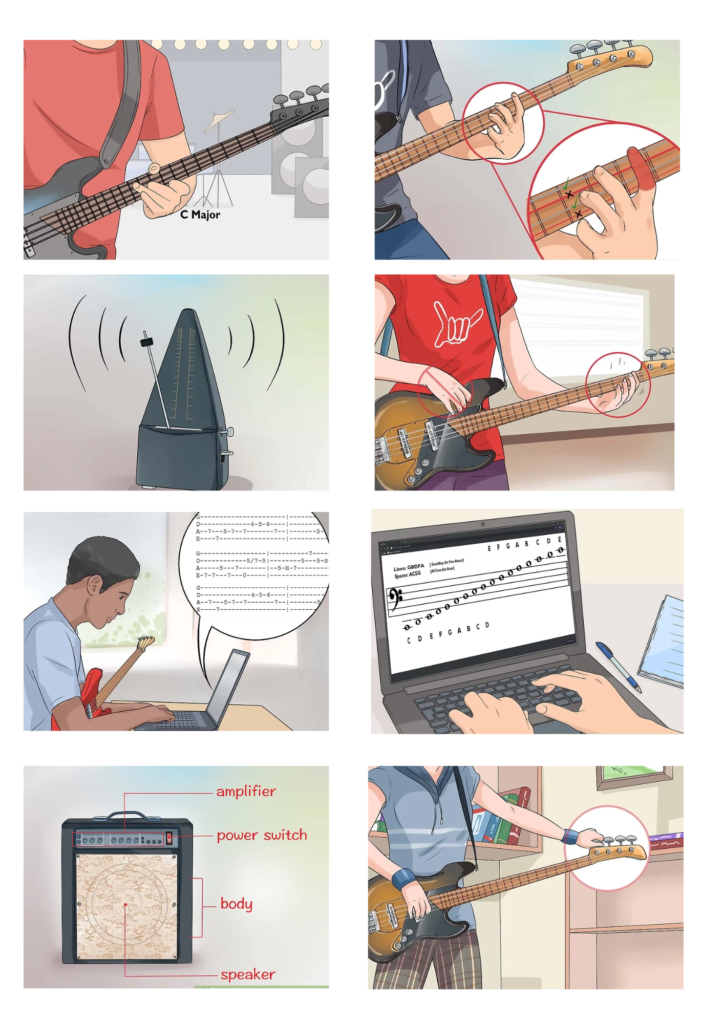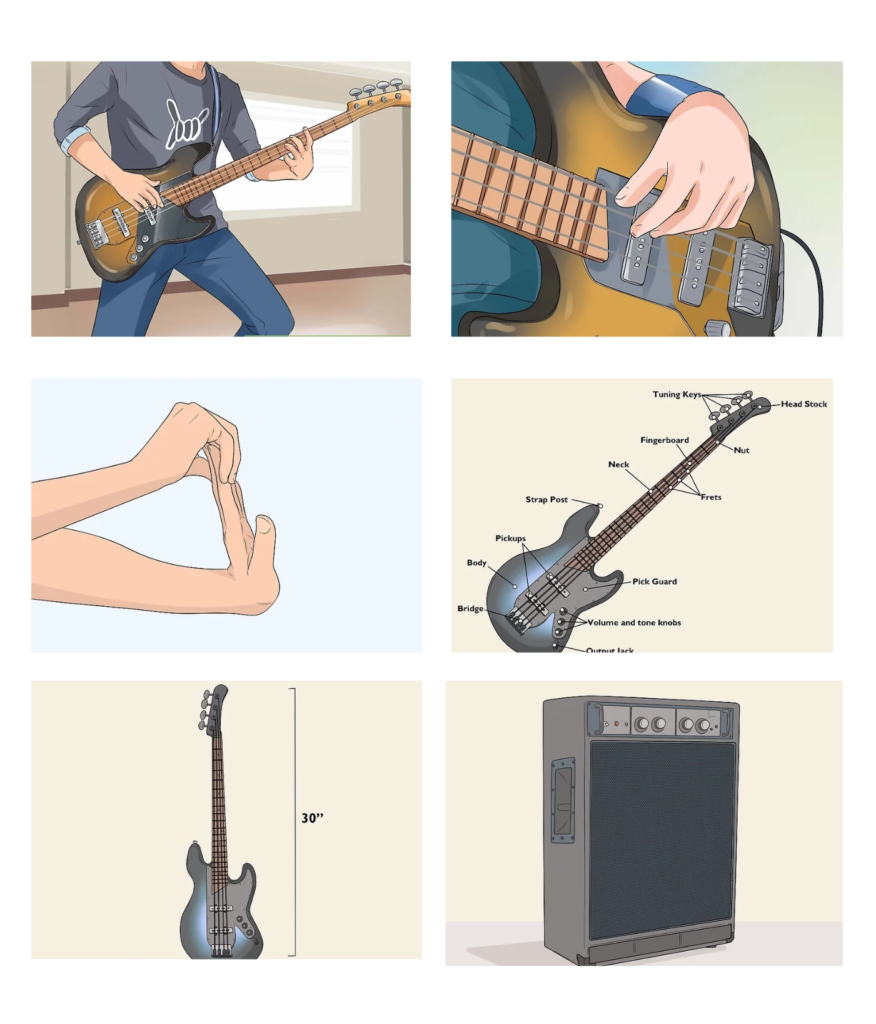Learning to play the bass guitar is not merely about mastering the instrument; it’s about understanding rhythm, melody, and the intricate interplay between various musical elements. While traditional lessons provide structured guidance, self-teaching offers a unique opportunity for exploration and personalization. In this deep dive into self-teaching bass guitar, we’ll delve into the nuances of technique, theory, and practice to help you develop a profound understanding of the instrument.
Understanding Technique
- Anatomy and Ergonomics: Begin by acquainting yourself with the anatomy of the bass guitar. Understand how the strings, frets, pickups, and controls work together. Focus on ergonomic principles to ensure comfort and efficiency while playing.
- Plucking Techniques: Explore different plucking techniques such as fingerstyle, slap bass, and using a pick. Experiment with variations in attack, tone, and dynamics to develop your unique playing style.
- Fretting and Hand Positioning: Pay close attention to hand positioning and fretting technique. Practice fretting notes cleanly and accurately, ensuring consistent pressure and finger placement for optimal sound production.
Delving into Music Theory
- Notes and Intervals: Develop a solid understanding of musical notation, note names, and intervals. Learn to navigate the fretboard by memorizing the notes on each string and understanding the relationship between notes and intervals.
- Scales and Modes: Dive into the world of scales and modes, starting with the fundamental major and minor scales. Explore different scale patterns across the fretboard and experiment with modal playing to expand your tonal palette.
- Chords and Harmony: Study chord construction and progressions to understand the harmonic foundation of music. Practice playing chord tones and arpeggios to develop fluency in creating melodic bass lines that complement chord changes.




Leveraging Online Resources
- Video Tutorials and Courses: Explore online platforms offering video tutorials and comprehensive courses tailored to bass guitarists. Take advantage of instructional videos covering a wide range of topics, from basic techniques to advanced theory and repertoire.
- Interactive Learning Tools: Utilize interactive learning tools and software applications designed to enhance your bass playing skills. Experiment with virtual fretboards, ear training exercises, and rhythm drills to reinforce your learning in a dynamic and engaging manner.
- Community Engagement: Engage with online communities and forums dedicated to bass guitar enthusiasts. Participate in discussions, seek advice, and share your progress with like-minded individuals. Collaborate with other musicians to expand your repertoire and gain valuable insights into different playing styles.
Cultivating a Practice Routine
- Goal Setting: Set specific, achievable goals for your practice sessions, whether it’s mastering a new technique, learning a challenging song, or improving your improvisational skills. Break down larger goals into smaller, manageable tasks to track your progress effectively.
- Structured Practice: Design a structured practice routine that incorporates warm-up exercises, technique drills, theory study, repertoire practice, and creative exploration. Allocate time for focused practice on areas that need improvement while maintaining a balance between repetition and variety.
- Reflective Practice: Reflect on your practice sessions regularly to assess your progress, identify areas for improvement, and adjust your approach accordingly. Keep a practice journal to document your achievements, challenges, and insights, allowing for continuous growth and refinement.
Embracing the Journey
- Patience and Persistence: Embrace the process of learning to play bass guitar with patience and persistence. Recognize that progress may be gradual and nonlinear, but every moment spent honing your craft contributes to your growth as a musician.
- Creative Exploration: Embrace creativity and experimentation as essential aspects of your musical journey. Don’t be afraid to deviate from prescribed exercises and explore your musical instincts. Trust your intuition and allow yourself the freedom to express your unique voice through the instrument.
- Continuous Learning: Commit to lifelong learning and continuous improvement as a bass guitarist. Stay curious, explore new techniques and genres, and seek inspiration from a diverse range of musical influences. Remember that mastery is not a destination but a journey of ongoing discovery and exploration.
Conclusion
Mastering the bass guitar through self-teaching is a deeply enriching and rewarding endeavor that requires dedication, discipline, and a passion for music. By honing your technique, delving into music theory, leveraging online resources, cultivating a practice routine, and embracing the journey with patience and persistence, you’ll embark on a transformative musical odyssey that will shape you into a versatile and expressive bassist.
So, immerse yourself in the rhythms, explore the depths of harmony, and let your creativity soar as you unlock the full potential of the bass guitar.
Happy playing and keep grooving!
- July 5th in America: The Quiet Day After the Boom
- Who Is Vanessa Trump? Inside the Life of Donald Trump Jr.’s Former Wife
- Remembering Steve McNair 16 Years Since the Titans Legend’s Tragic Passing
- Is Guitar Center Open on 4th of July? Here’s What You Need to Know
- Unlocking Style Core Aesthetics: The New Era of Personal Fashion

